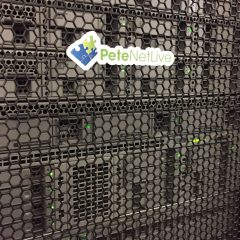EVE-NG on VMware ESX Strange ARP Problems?
KB ID 0001601 Problem I use EVE-NG a lot, it’s an awesome tool. Also I’m lucky enough to have my own ESX servers, so that’s where it lives. I’ve noticed this problem before, but I’ve either given up, and done something else, or it’s manifested itself in an ‘odd’ way that I can work around. If you’re new to connecting EVE-NG to a live network you might want to read the following...
Adding New Networks to Cisco AnyConnect VPNs
KB ID 0001593 Problem Note: To add new subnets to a traditional Site to Site VPN, see the following article instead; Cisco ASA – Adding New Networks to Existing VPNs I see this get asked in online forums A LOT. If you have an existing AnyConnect VPN setup, and then need to add another network how do you do it? Well that depends on where the new network is, and how it’s entering the firewall, these diagrams can be either way...
Cisco Firewalls and PING
KB ID 0000351 Problem With regards to Ping, out of the box a Cisco firewall will allow you to ping the interface you are connected to, so in a normal setup inside clients can ping the inside interface, and the firewalls outside interface can be pinged from outside. OK – to understand pinging through a Cisco Firewall you need to understand that Ping is part of the ICMP protocol suite, and unlike other protocols is not “connection...
Cisco FirePOWER SFR Module Cannot Ping
KB ID 0001174 Problem On a newly deployed FirePOWER service module I wanted to test connectivity and attempted to ping a public IP address. This is what happened; > expert admin@Petes-SFR:~$ ping 8.8.8.8 ping: icmp open socket: Operation not permitted My first though was, “Well you have to set a default gateway on the SFR when you set it up, so the firewall is probably blocking ICMP”. So I checked the default policy...
GNS3 Cannot Connect Network Interfaces when running on VMware vSphere
KB ID 0000671 Problem I have plenty of real ASA firewalls to play with, but it’s getting round to re-certification time, so for ease I thought I’d run up a Virtual ASA on my vSphere 5 box just for testing and breaking. However no matter what type of Virtual Network adaptor I used (vmxnet3, e1000, etc) I could not connect to the virtual firewall. Solution 1. Firstly make sure you actually have an IP address in the correct...



